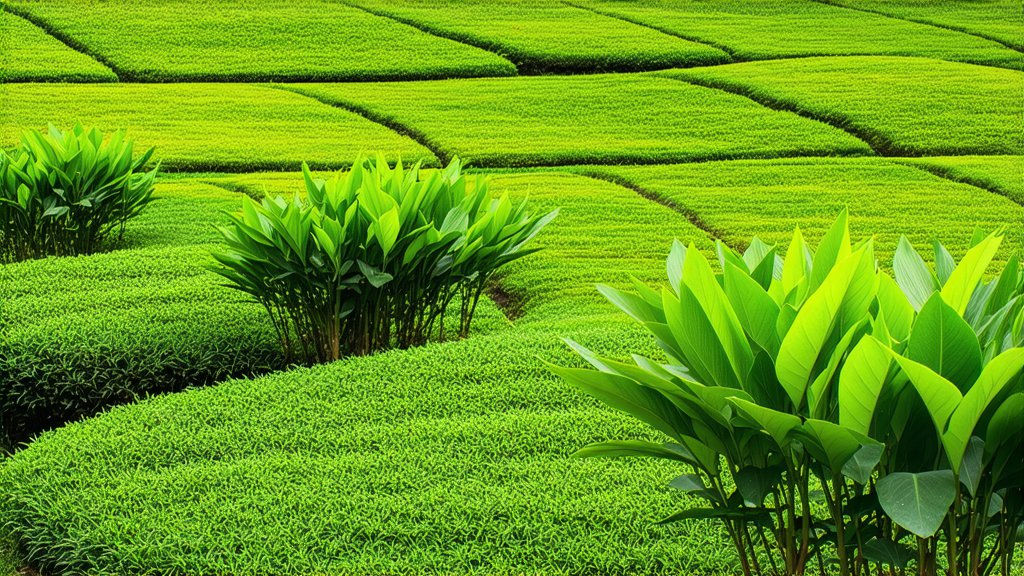
In the vast and diverse landscape of Chinese tea, oolong tea stands as a testament to the intricate balance between green and black teas. Among its many varieties, Tieguanyin is often celebrated for its unique flavor profile, aromatic qualities, and the meticulous craftsmanship involved in its production. This article delves into the historical background, various types, the elaborate manufacturing process, and the art of tasting this exquisite beverage that has captivated tea enthusiasts around the globe.
Historical Background
Tieguanyin, also known as the "Iron Goddess of Mercy," traces its origins back to the Anxi region in Fujian province, China. The name itself is steeped in legend, with one popular story attributing its discovery to a poor farmer named Wei Yin who found a wild tea plant and propagated it. Over centuries, this variety evolved through selective breeding and cultivation practices to become the renowned Tieguanyin we know today. Its popularity surged during the Ming Dynasty, and by the Qing Dynasty, it had become a favored choice among the imperial court.
Varieties of Tieguanyin
There are several sub-varieties of Tieguanyin, each with distinct characteristics influenced by factors such as altitude, soil composition, and climate conditions. The most notable ones include:
- Xiang Xing (Fragrant Type): Known for its pronounced floral aroma, particularly orchid-like fragrance.
- Dan Cui (Single Bush): Grown from cuttings of a single ancient tea tree, offering a richer and more complex flavor profile.
- Shui Xian (Narcissus): Recognized for its smooth taste and high-quality leaves, often used in blends to enhance overall flavor.
- Bai Hao (White Hair): Distinguished by its silvery tips, giving it a delicate and refined taste.
- Huang Jin Gui (Golden Osmanthus): Infused with osmanthus flowers, providing a sweet and fragrant experience.
Manufacturing Process
The creation of Tieguanyin involves a series of carefully orchestrated steps that transform fresh leaves into the final product:
- Plucking: Only the top two to three leaves and a bud are harvested, ensuring optimal quality.
- Withering: Leaves are spread out under the sun or in shade to reduce moisture content, allowing enzymes to initiate partial oxidation.
- Tossing and Turning (Qing Ming): Leaves are continuously tossed and turned to prevent oxidation while shaping them. This step can last up to 20 hours and is crucial for developing the tea's unique flavor and aroma.
- Fixation: High heat is applied to halt enzymatic activity and fix the leaf's shape. This is typically done in a wok or rolling machine.
- Rolling: Leaves are rolled to further break down cell walls, releasing juices and enhancing flavor extraction during brewing.
- Oxidation: Leaves undergo controlled oxidation, where they are exposed to air and gently tossed to ensure even oxidation.
- Roasting: Finally, the leaves are roasted to remove any remaining moisture, enhancing their aroma and stability for storage.
Tasting Tieguanyin
Appreciating Tieguanyin goes beyond just drinking; it involves an immersive sensory experience. Here's how to properly taste this exceptional tea:
- Preparation: Use a Yixing clay teapot or a Gaiwan for brewing, as these materials help retain heat and enhance flavor. Rinse the leaves briefly with hot water (around 90°C) to awaken their flavors.
- Brewing: Add approximately 5 grams of loose leaves per 150ml of water. Steep for about 30 seconds for the first infusion, then gradually increase steeping time for subsequent infusions. Tieguanyin can be steeped multiple times, with each brew revealing different nuances.
- Aroma: Before taking a sip, inhale deeply to appreciate the tea's aroma. Note any floral, fruity, or roasted notes that stand out.
- Taste: Sip slowly, allowing the tea to coat your palate. Pay attention to the initial taste, mid-notes, and aftertaste. Look for a balance between sweetness, bitterness, and astringency.
- Mouthfeel: Observe the texture of the tea in your mouth. A good Tieguanyin should feel smooth and velvety, with a lingering finish.
In conclusion, Tieguanyin embodies the essence of Chinese tea culture—its history intertwined with mythology, its varieties reflecting the diversity of nature, and its production a testament to human ingenuity and patience. For those seeking a journey through flavors and aromas that tell tales of generations past, Tieguanyin offers an unparalleled experience that transcends time and borders.
Keywords: Oolong, Tieguanyin, Chinese tea culture, tea processing, tea tasting